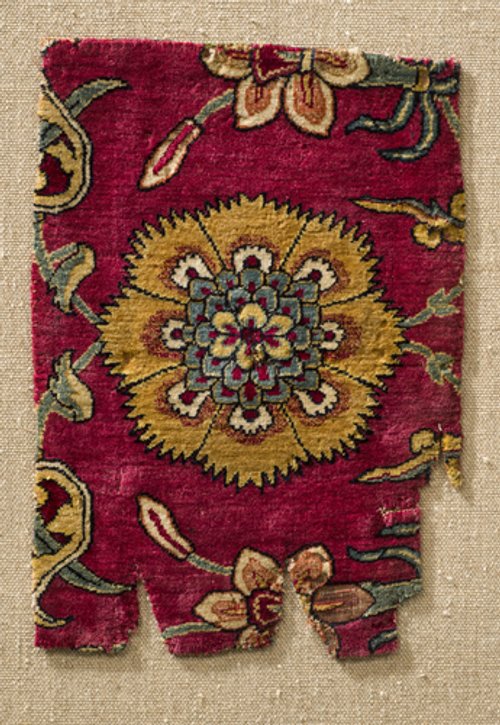Fragment eines sogenannten Baum-Teppichs. Auf rotem Grund ist eine Rosette zu erkennen, die von Blütenstauden umgeben ist. Der sogenannte Baum-Teppich zeigte ursprünglich drei Baumreihen und Blütenstauden auf und gab dem Teppich dementsprechend seinen Namen. Er ist typisch für die Mogulzeit und ist deshalb auch als Mogul-Teppich bekannt. Er trägt zusätzlich den Namen seines ehemaligen Besitzers nämlich Frick-Teppich. Er stammt aus der Moschee des Schah Safi in Ardabil, wurde aber schon im 19. Jahrhundert in mehrere Fragmente zerrissen und so weltweit verstreut, wobei wahrscheinlich mehr als die Hälfte des Teppichs verlorengegangen ist. Weiter Fragmente gehören zu dem Teppich (I. 7/58 a-c und 7/59).
en









